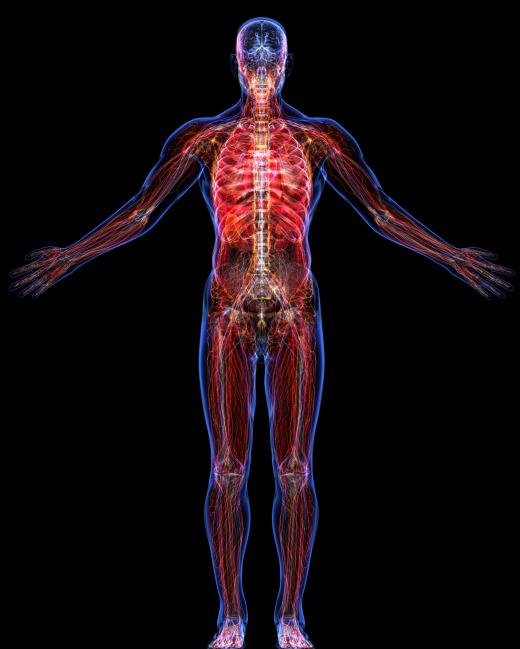What is Enzyme Induction?
 Mary McMahon
Mary McMahon
Enzyme induction is a process where the production of an enzyme is triggered or increased in response to changes in the environment that surrounds an individual cell. The increase in expression creates a chain reaction as the enzyme begins to act in the body. Enzymes that are susceptible to induction are said to be “inducible,” and there are a number of them in the body that can kick into production when needed while remaining dormant otherwise.
In enzyme induction, a cell is exposed to a molecule that promotes the production of enzymes by the cell. The molecule binds to a repressor, a chemical compound that is designed to limit or prevent enzyme production, so that obstacle is removed. The enzyme is made by the cell until it is no longer needed. In some cases, the hijacking of this process can be used to harm the body, as seen with bacteria and certain types of toxins.

Inducer molecules can include medications, toxins, and hormones produced by the body. As a result, understanding how the induction process works is critical to understanding many different reactions that happen inside the body. Pharmaceutical researchers need to know how the drugs they develop will interact with the body and must also consider the possibility of drug interactions, where multiple drugs lead to enzyme induction and can make people experience adverse reactions to medication. Toxicologists also study the role of chemical compounds in the body on enzyme production to determine how toxins cause damage and what can be done to arrest or reverse damage.

Medical conditions linked to over or underproduction of hormones in the body can involve induction, as can treatments where hormones are introduced. Researchers who study the endocrine system look at how and why the body produces hormones and what these hormones do when they are released into the bloodstream. In cases where enzyme induction is triggered by changing hormone levels, it can be important to understand what the enzymes do, and how the body turns production off.
The opposite of induction is inhibition, where chemical signals interfere with the production of enzymes. Enzyme inhibition is used to mediate a number of processes in the body, and it can also be harnessed in medical treatment for patients with rising enzyme levels caused by disease, exposure to toxins, and other problems. Induction and inhibition together are used by the body to control a number of reactions and interactions that play a role in everything from natural cell death to digestion.
AS FEATURED ON:
AS FEATURED ON:












Discuss this Article
Post your comments